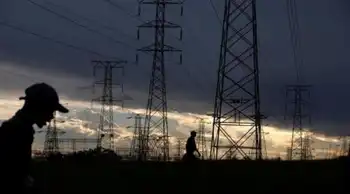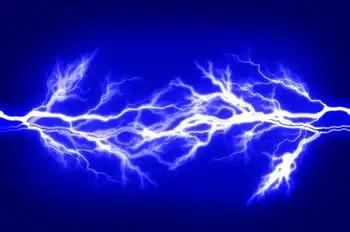Recession makes 2003 blackout unlikely
“The current recession definitely bought some time for utilities,” said Angie Storozynski, an analyst at Macquarie Capital USA Inc. in New York. “Economic contraction reduced traffic on transmission lines, easing the pressure to add new transmission capacity.”
Economic weakness in the U.S. and Canada this heating season will reduce peak electricity demand 2.5 percent from last season to 706,965 megawatts, according to the North American Electric Reliability Corp., which oversees power systems that failed 50 million people in the August 2003 blackout.
The drop in consumption and electricity prices makes spending on the nationÂ’s aging grid more attractive for investors than power-generation projects, said James Miller, chief executive officer of PPL Corp., the Allentown, Pennsylvania-based energy supplier. Transmission-grid projects provide more predictable earnings, he said.
State public service commissions allow utilities to earn a higher return on transmission lines than on distribution business, Storozynski said.
Pepco Holdings Inc., which is building a new transmission line from northern Virginia to Delaware, is the best performer among the Standard & PoorÂ’s 500 Electric Utilities Index so far this quarter, thanks to the companyÂ’s investments in regulated transmission, said Paul Franzen, a utility analyst at Edward Jones & Co. near St. Louis.
Pepco, based in Washington, has four “buy” ratings, five “holds” and one “sell” from analysts surveyed by Bloomberg. PPL has three “buys” and six “holds” and is still trading below analysts’ share-price expectations, according to data compiled by Bloomberg.
The Obama administration on November 24 awarded $620 million for projects to help monitoring of power flows and control energy use in homes. The awards are part of the $787 billion economic stimulus package approved in February.
Infrastructure upgrades, better communication and tougher enforcement reduce the chances of repeating the 2003 blackout, which caused $10 billion of damage across eight states and Ontario, said Kelly Ziegler, a spokeswoman for NERC.
The amount of transmission investment by investor-owned utilities has almost doubled to $10.6 billion planned for this year from $5.7 billion the year of the blackout, according to the Edison Electric Institute, an industry group. The disaster left customers without power on a sweltering summer day, from Lansing, Michigan, to New York City.
“I wouldn’t have wanted to be there,” said Danny Bucklen, president of the American Power Dispatchers Association, a trade organization for electricity dispatchers. “It’s like a captain watching a sinking ship.”
The blackout created traffic jams in New York that stretched for dozens of miles and paralyzed hundreds of subway and commuter trains. Thousands of people spent the night on Manhattan sidewalks or in office lobbies, using newspapers as bedding. Tourists and New Yorkers alike wandered the streets, some fearful of another September 11 disaster.
“My daughter was just freaking out,” said Ida North, a 60-year-old Warren, Pennsylvania, restaurant owner who was stranded with her daughter and two grandchildren in New York that day. “She thought it was another terrorist attack. It was so surreal.”
The U.S. Energy Policy Act of 2005 provides for fines that can total $1 million a day for each violation that risks reliability, including not removing tree limbs from the pathways of transmission lines, Ziegler said.
NERC imposed a $25 million penalty in October on FPL Group Inc. after its staff accidentally caused a power failure that affected about 600,000 Florida homes and businesses. The amount was 100 times the size of the next-biggest penalty handed down by NERC since the 2003 blackout prompted Congress to give the Princeton, New Jersey-based nonprofit the power to levy such punishments.
The 2003 disaster started when a sagging power line, owned by FirstEnergy Corp., an Akron, Ohio-based utility, touched a limb. U.S. and Canadian investigators blamed the spread of the blackout on Carmel, Indiana-based Midwest Independent Transmission System Operator, the utility-owned non-profit that oversees that part of the power grid.
FirstEnergy has since completed a new computer system in Ohio and Pennsylvania, upgraded its control center in Ohio and installed mechanisms to regulate power delivery to help prevent system overloads, said Mark Durbin, a spokesman. He declined to say how much the enhancements cost.
Utilities under MISOÂ’s purview have 332 projects planned to improve the regionÂ’s grid during the next five years, at a cost of $2.4 billion. Since 2003, those utilities have spent $2.2 billion to improve transmission lines and avoid a repeat of the blackout, said Roger Harszy, MISOÂ’s vice president of real-time operations.
“We’re not standing still,” Harszy said in an interview inside MISO’s gymnasium-sized control room in Carmel, where a wall covered in blinking lights monitored an electrical network covering 13 states and Manitoba. “The age of the infrastructure is a concern.”
One company in MISOÂ’s network working to boost capacity and reliability is Minneapolis-based Xcel Energy Inc., the biggest U.S. supplier of wind-generated power to retail customers. It plans a $400 million, 345-kilovolt line that will snake through 150 miles of corn and soybean cropland between Hampton, Minnesota, and La Crosse, Wisconsin. Xcel said this will let it add wind energy to its system without overwhelming it and hurting reliability.
Xcel will pass the cost of transmission renovations to consumers, said Tim Carlsgaard, a company spokesman. Customers will see a $2.25 increase on an average monthly bill of $75 at the peak of construction in 2012 or 2013, he said.
ItÂ’s one more step to avoid a repeat of what tens of millions of startled citizens experienced six years ago.
Susan Eisenhower, granddaughter of the 34th U.S. president and an energy and security consultant, was in New York conducting research when the lights went out.
“It’s a reminder that we take this largely for granted,” she said in a telephone interview. “It’s an interesting case in point of how vulnerable our society is.”
Related News

Consumers Coalition wants Manitoba Hydro?s proposed rate increase rejected
WINNIPEG - The Consumers Coalition is urging the Public Utilities Board (PUB) to reject Manitoba Hydro’s current interim rate increase application.
Hydro is requesting a five per cent jump in electricity rates starting on January 1, claiming drought conditions warrant the increase but the coalition disagrees, saying a two per cent increase would be sufficient.
The coalition, which includes Harvest Manitoba, the Consumers’ Association of Canada-Manitoba, and the Aboriginal Council of Winnipeg, said a 5 per cent rate increase would put an unnecessary strain on consumer budgets, especially for those on fixed incomes or living up north.
"We feel that, in many ways,…





